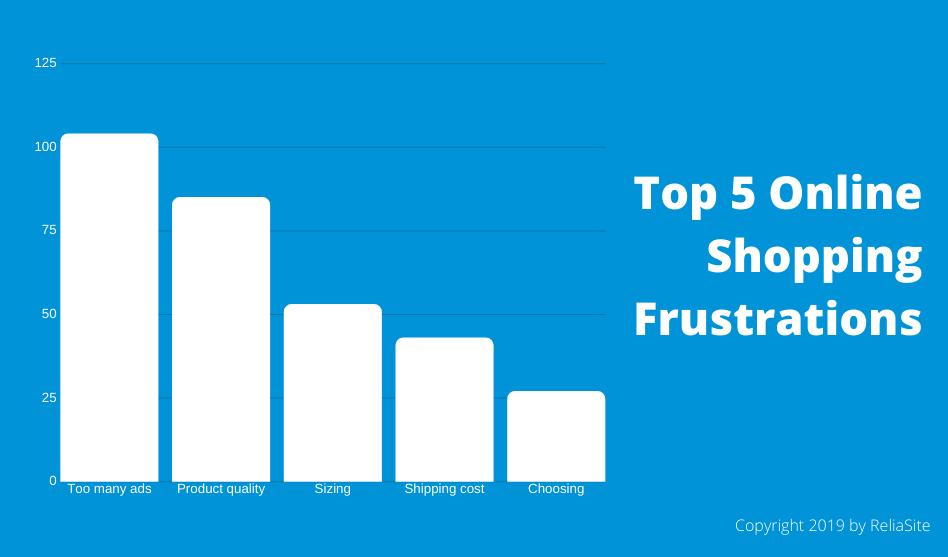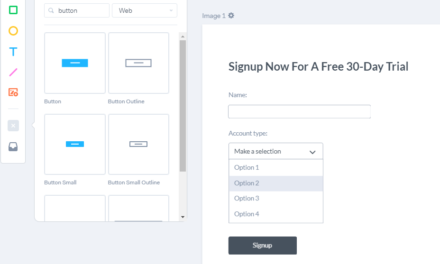Want to build a great ecommerce website? Start by tackling what customers hate about online shopping: too many ads, unknown product quality, sizing issues, & high shipping costs.
Officinaphobia. Also known as the “fear of shopping”, it’s a problem I certainly sympathize with. I don’t have an actual phobia of shopping, but I definitely don’t like it (especially shopping for clothes, ugh).
Unless it’s online…then shopping becomes palatable. I don’t mind searching, sorting, filtering, and purchasing products I need online. Hey, it beats a trip to my local Mal-Wart!
But, even for people who enjoy shopping more than I do, online shopping isn’t all sunshine and roses. Sometimes online shopping can be frustrating…or downright maddening.
There are some real frustrations and challenges retailers need to do a better job of solving. That’s why we recently commissioned a study to identify the top frustrations and difficulties online shoppers face. We wanted to ask the question: what pain points or frustrations should ecommerce websites get better at solving? Here’s what we found.
About the Study
We used Google Surveys to run this study, targeting 400 adults within the US. We used open-ended and multi-choice questions to identify, then rank the top frustrations users report when shopping online. The surveys responses were from a representative sample of US internet users aged 18 and older.
Survey Results: Top 5 Online Shopping Frustrations

Here’s what our 400 survey respondents listed as their top online shopping frustrations:
- Too many ads
- Not knowing if the product is good quality
- Getting the right size
- High shipping costs
- Choosing from all the options
What Ecommerce Websites Can Learn from This Survey
- Kill the ads. If you’re running an ecommerce website, get rid of ads (unless they’re an important part of your revenue.) If you need ads, find ways to make them less annoying, more integrated, and more natural.
- Find ways for customers to experience the product. Video demos, animations, 3D viewers, unboxing videos, and product test videos are all ways you can help your customers to get a feel for the quality of your products…without actually touching the product themselves.
- Go above and beyond with sizing charts. Make it as easy as possible for customers to find the exact right size. As an added bonus, this can also reduce your return rate and save you money on the backend!
- Offer free shipping. If at all possible, find a way to offer free shipping. One way to make this financially feasible is to only offer free shipping on orders over a certain amount.
- Invest into your filter, sort, and compare features. Giving customers robust, user-friendly options for searching, filtering, sorting, and comparing products makes it a lot easier for them to choose the right product from all the options you offer.
Analyzing the Survey Results
We were a bit surprised to see “too many ads” come in with such a big lead for position #1, as most ecommerce websites don’t have any ads and shopping comparison websites usually have pretty subtle ads. Perhaps our survey respondents are visiting review sites, coupon sites, or other websites with more aggressive advertising, or perhaps their complaint about too many ads is just based on their overall internet experience.
The rest of the top 5 frustrations are all drawbacks online shopping has when compared to brick-and-mortar shopping:
- It’s more difficult to evaluate a product’s quality without touching and seeing it.
- Getting the right size is tougher since you can’t try it on.
- You never pay shipping when you buy something from a local store.
- The combination of many choices with the inability to see and touch the products makes it harder to choose.
We found it interesting that price, support, and privacy all failed to make it into the top 5. Perhaps price isn’t a frustration point because the internet does a great job at giving customers a lot of options for comparing prices. We’re not sure why support didn’t make the top list, as it’s certainly something that’s important to many people. Privacy and security perhaps isn’t really a surprise – people say it’s important if you ask, but it’s not something most people actually think about on a daily basis.




